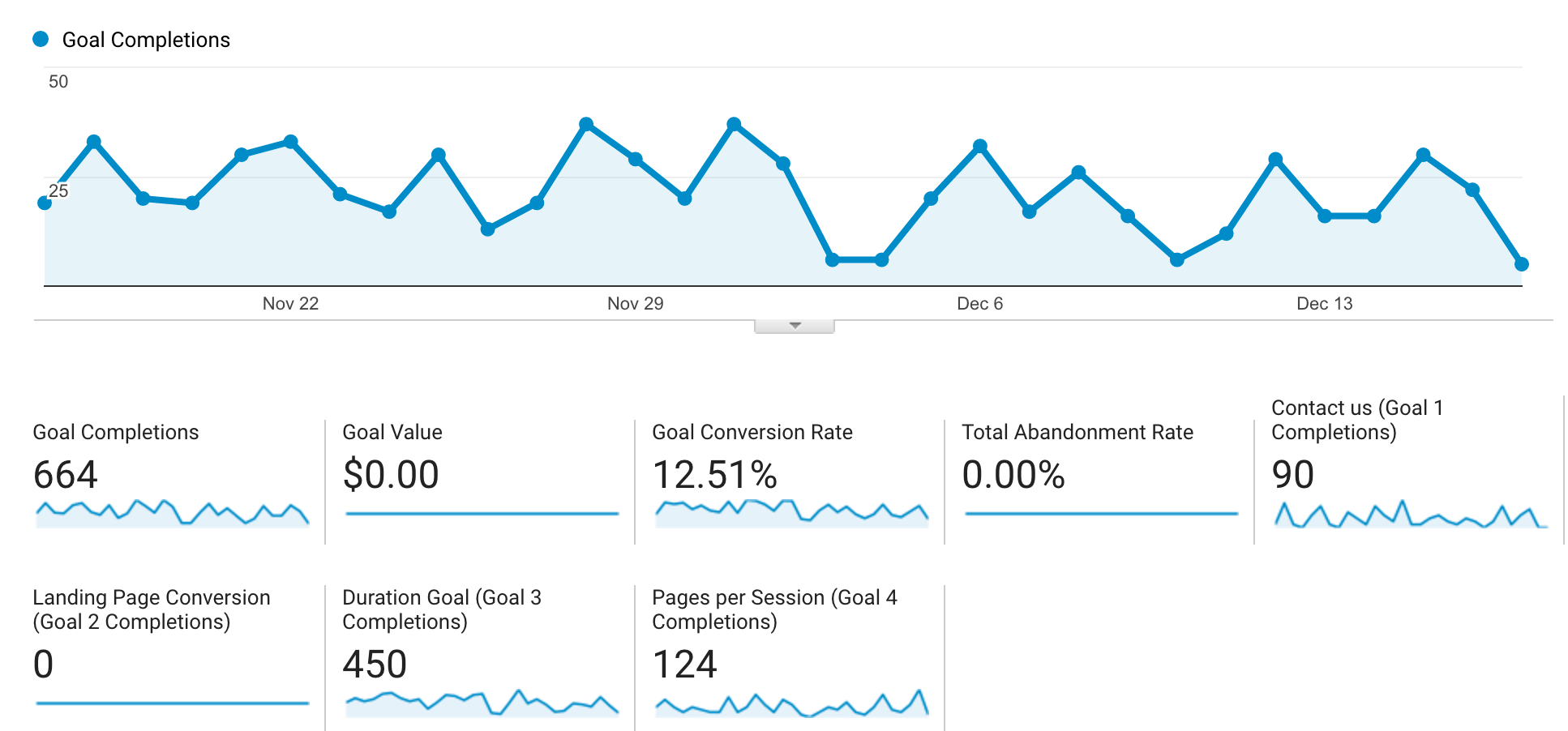Owners and executives want to see a return in value for the investments they are making. Understandably so, they want to make sure their money is working for them. Investments in digital marketing, meaning websites, social media and content creation, don’t get a free pass on having to provide an ROI.
The struggle for many marketing teams is that the world of digital marketing is oftentimes foreign to senior executives. “Social media” is what their kids do. This can make it difficult for a marketing person to legitimize their efforts. However, with the right approach, you can not only convince your executive team that it’s effective, but that you need to invest further in online marketing.
“We have 457 followers on Facebook” doesn’t always translate into increased sales and profitability. As a marketer, your job ultimately is to help bring business in. In this post, we’ll walk through three major steps when showing your boss that your online marketing is working.
1. Define Your KPIs (Key Performance Indicators)
What does success mean in your digital efforts? What numbers, if moved, would mean that you are being effective?
These are your key performance indicators, KPIs. You’ll want to work directly with your executive team to determine what your KPIs are. You want them to have skin in the game, and also an understanding of what goals you are aiming for.
Don’t let yourself get overwhelmed with the shear amount of data points and platform metrics with digital marketing. The ‘old school’ indicators of marketing are still just as relevant on today’s digital platforms. Combining broader metrics that your executive team is familiar, such as lead generation, along with online specific goals, like website conversion rate, are a great way to build a comfort level with your higher-ups.
Start by having a meeting with your team to determine your KPIs. Enter the meeting prepared with some of your own suggestions, but also ask them what ultimately they are looking to gain from your digital efforts. Expect to hear “We need more sales.” Great, you can tell them that one of your goals will be to turn website visitors into tangible leads for your sales team. Get excited, and come in with an open mind.
For the sake of examples below, we will say that your team decided to track 1) Website Leads Generated, and 2) Social Brand Reach.
2. Track Your Metrics
Now that your KPIs have been identified, you need to track them with a high priority, in addition to other metrics you might be already following. For instance, your Twitter follower count might still be something you look at, but the impressions of your posts (i.e. your brand reach) is now the main metric you grab from twitter.
Setup tracking tools that allow you to pull data on metrics as needed. What tools you use are going to be dependent on the data you want to get. As a starting point, Google Analytics is great for almost any website visitor data, Facebook, Twitter and LinkedIn all offer built-in insights, and Moz offers my favorite SEO tracking tools.
I recommend looking briefly at your metrics weekly, then doing a full report on a monthly basis. For the sake of analyzing, I like to create a separate spreadsheet to track my KPI’s. This allows me to look at data independent of any platform, and combine as needed.
For our examples, let’s take a look at how this might be done.
Website Leads Generated

First to define what a website lead is… for this example, we’ll say a person that converts into an actionable lead. This can be somebody that fills out a contact form, get estimate form, signs up for your email newsletter, etc. Some conversions are more ‘hot’ than others, but all are something you can provide to your sales team.
For tracking on-website activity, Google Analytics has goals that can be custom configured based on your needs. With some configuration, you can setup goal events triggered by button clicks. For instance, when a user clicks the submit button on a form, it can mark it as a goal complete. With this tracking in place, it’s very easy to select a date range and determine how many ‘leads’ were generated.
You can also work directly with your sales team and have them track their lead source in their CRM. In most cases, this is as simple as having them enter “Website” or “Digital” in the lead source field every time they enter a new lead that was generated online. Assuming your sales team is diligent about keeping notes in the CRM (a big if for some organizations), you can now go back and export a list of all leads sourced online.
Social Brand Reach

What I like about your social reach goals is that it puts some perspective on ‘doing social media’. Many executives still unfortunately see social media as a childish black hole of their employee’s times. So by showing them data on how many people are being exposed to your brand, it helps to legitimize what you are doing. Just like a billboard, radio ad, or direct mail campaign, you can give them hard numbers on reach.
Facebook has Page Insights, Twitter and Linked have their own Analytics, and almost every other platform has some other tool for marketers. The key here is to familiarize yourself with whichever tools are present on the platforms you work with. Learn where to grab the numbers for post and page reach.
As I mentioned earlier, I typically will check-in with some data points on a weekly basis, then monthly, add data to an on-going cumulative spreadsheet. In this case, you might create a column for each platform you’re promoting on, then enter in a monthly reach number for each. Creating a cumulative total that can be tracked month-to-month. Here is an example excel file.
3. Share Success and Strategize

Hopefully your digital marketing efforts are paying off, and your KPIs are showing that your digital marketing channels are providing real value to your business! If this is the case, sit down with your executives and share the success with them. Knowing that they helped determine what metrics are important, you can now come back to them with empirical data on the impact. “We’ve been averaging 24 leads per month.”, or maybe “Our social channels reached 7,394 people last month, that’s a 37% increase over last year!”
Get your team excited about the success. Assuming that your KPIs are in line with business goals, it’s likely that your marketing effort is already effecting sales and customer revenue growth. In the same vein, if one channel isn’t working as well as others, talk about how you might adapt your strategy. Keep the lines of communication open, and continue to help educate your bosses on the impact of what you are doing.
Now that you’ve proven the value of your digital marketing efforts, you can take it a step further and strategize where you want to go next. Maybe you increase the amount of content you create on your website to help with search traffic, or since your Facebook advertisements worked so well, you can increase your spend there. Keep working with your higher-ups to continue making a positive impact.






